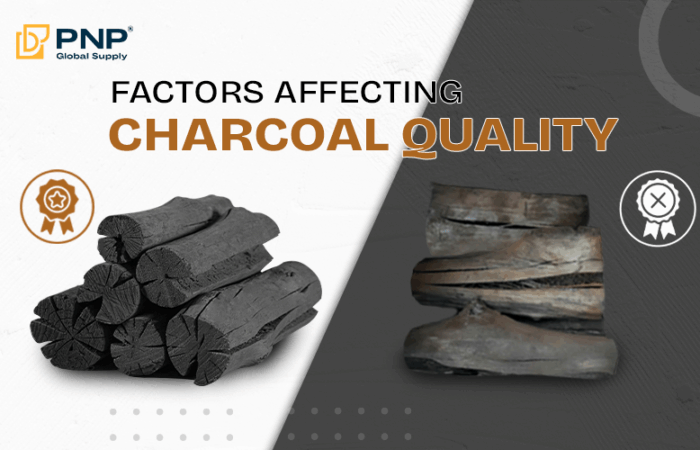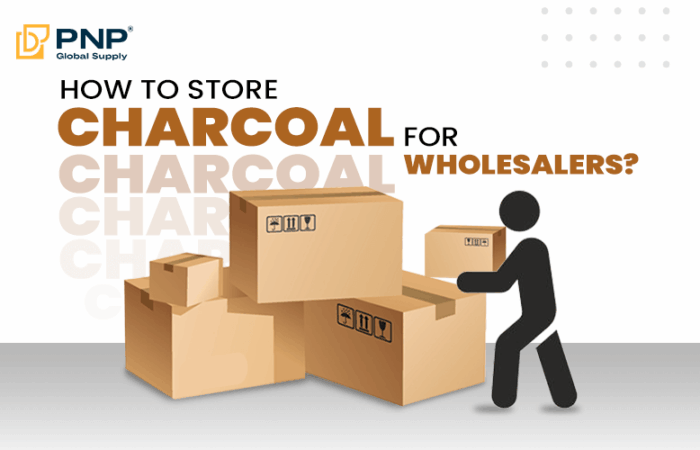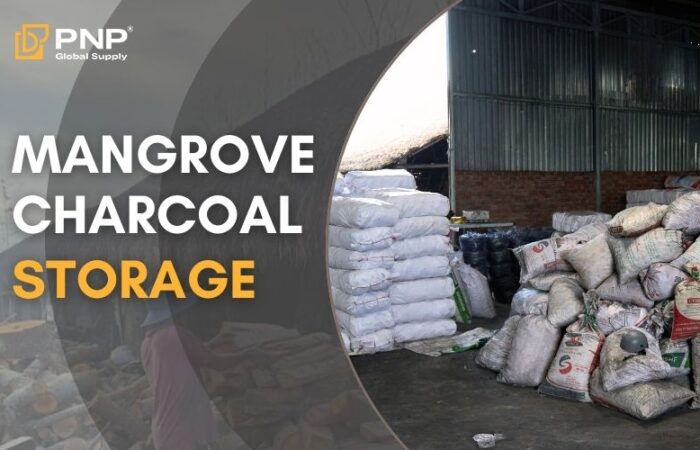Charcoal is a popular fuel source used for BBQs, outdoor cooking, and camping. Whether you’re using smokeless BBQ charcoal, camping BBQ charcoal, or traditional lump charcoal, how you store it directly impacts its performance and longevity. Poor storage for charcoal can lead to moisture absorption, crumbling, or even mold — all of which reduce burning efficiency. In this guide, we’ll explore best practices for storage charcoal to help you keep your fuel in top condition, whether you’re a casual griller or a professional charcoal supplier.
Why Proper Charcoal Storage Matters
Although charcoal looks dry and durable, it’s surprisingly vulnerable to moisture, heat, and even odors. Storing charcoal improperly can lead to:
- Harder ignition and poor combustion
- Lower heat output and shorter burn time
- Musty smell or smoky flavor during grilling
- Product waste due to breakage or mold growth
For high-grade products like smokeless BBQ charcoal or export-quality Vietnam charcoal, improper storage can compromise the very features that make them premium.

Common Factors That Damage Charcoal
Before we dive into how to store charcoal, let’s identify the environmental factors that can ruin its quality:
Humidity and Water Exposure
Charcoal is porous and can easily absorb moisture from the air. When damp, it takes longer to ignite and produces more smoke. Smokeless BBQ charcoal in particular loses its low-smoke characteristic when stored in a humid environment.
Direct Sunlight and Heat
Overexposure to sunlight can cause the charcoal to expand and crack. Heat can also change its structure, especially for pressed forms like camping BBQ charcoal.
Chemical Odors and Contaminants
Charcoal absorbs nearby smells and fumes. If stored next to paint, fuel, or cleaning supplies, it may give off unpleasant odors when burned. This affects food flavor and indoor air quality.
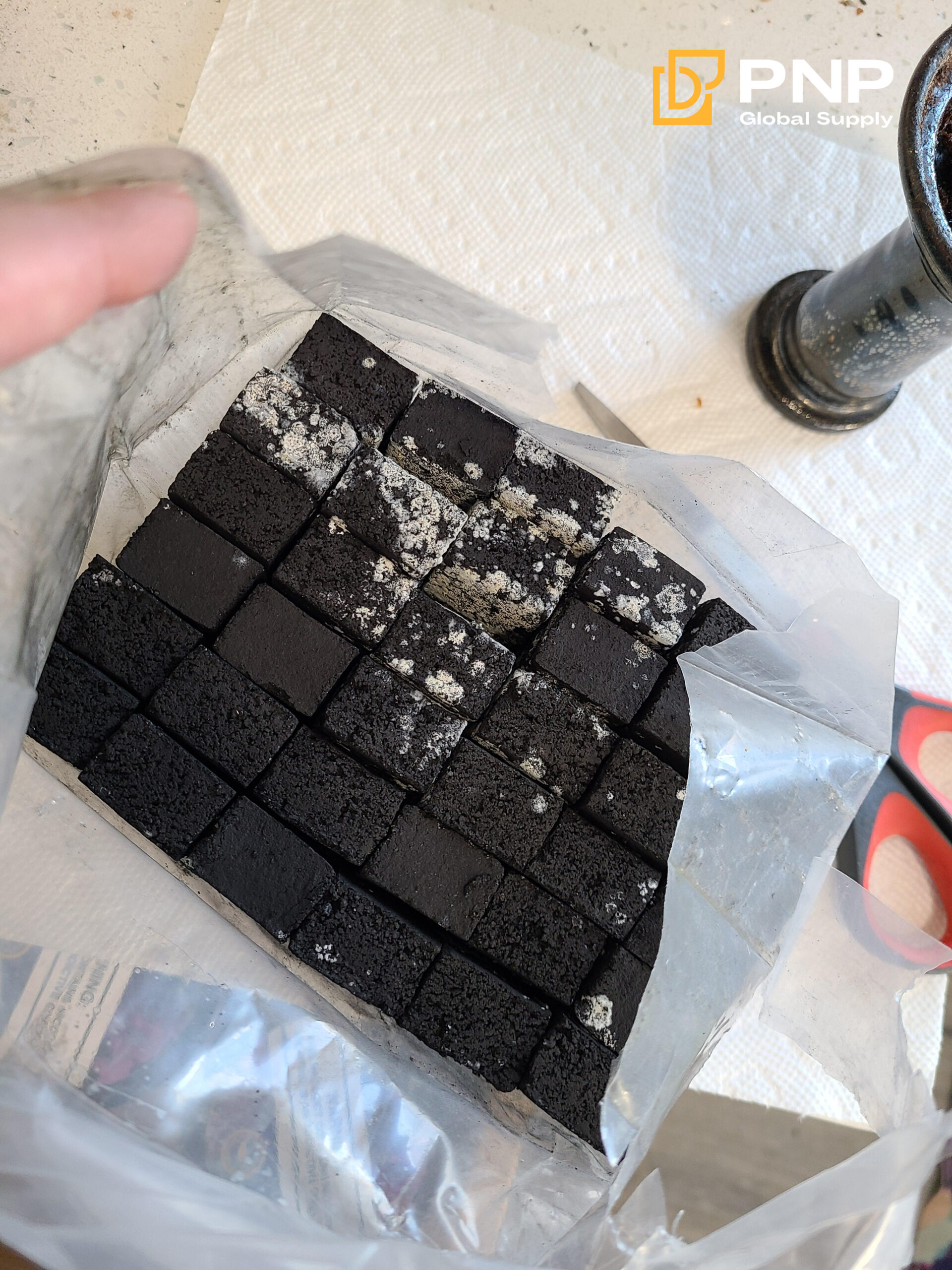
Best Practices for Storing Charcoal at Home
Whether you’re storing a small batch or buying in bulk, these tips will help maintain charcoal quality:
Use the Right Packaging
Good packaging is the first defense against moisture and contaminants. Recommended materials include:
- Kraft paper bags with an inner PE lining
- Woven polypropylene (PP) bags with moisture resistance
- Plastic bins with tight-sealing lids (for small quantities)
Avoid using thin plastic bags, as they trap humidity and promote mold.
Choose a Cool, Dry Storage Area
Store your charcoal in a well-ventilated, shaded space like:
- A garage or storage room with minimal temperature fluctuation
- Under a roof or awning with no direct sun exposure
- On shelves or pallets at least 15–20cm off the ground to avoid ground moisture
Separate Fresh and Used Charcoal
Don’t mix leftover, partially burned charcoal with fresh pieces. Store used charcoal separately in a sealed container. This helps prevent contamination and inconsistent performance.
Label Your Charcoal by Type and Purchase Date
If you use multiple types (e.g., Vietnam charcoal, hardwood, coconut shell), label them clearly. Use older stock first (FIFO method: First In, First Out) to reduce waste.
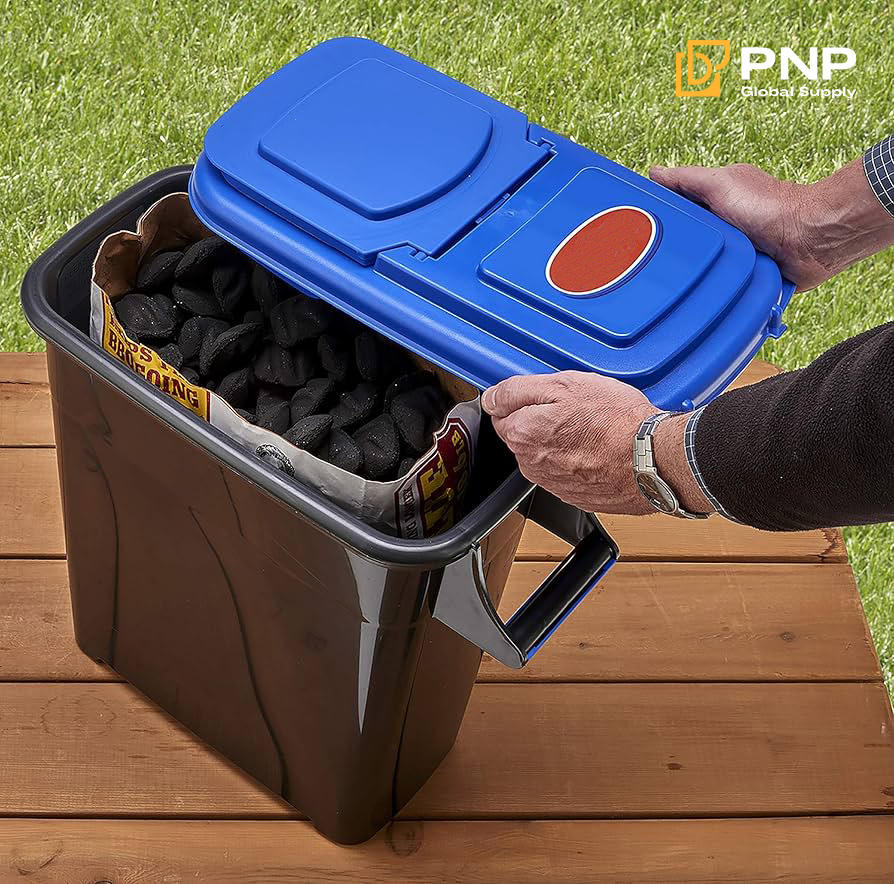
How to Store Charcoal for Camping
For outdoor adventurers, keeping camping BBQ charcoal dry and intact is essential. Here’s how to pack and protect it:
Compact, Portable Storage Options:
- Use small, resealable ziplock bags for one-time grilling portions
- Store charcoal in hard plastic containers or ammo boxes for protection during travel
- Include a few silica gel packets to absorb residual moisture\
Avoid These Mistakes:
- Don’t leave charcoal in the car under direct sunlight — it may cause condensation inside containers
- Never store charcoal near food or liquids
- Keep it in a tent or backpack compartment that stays dry and ventilated
Charcoal Storage Tips for Restaurants and Suppliers
If you’re a restaurant owner or a bulk charcoal supplier, efficient storage for charcoal becomes even more important for maintaining product quality and minimizing loss.
Set Up a Dedicated Storage Zone
- Use a warehouse or covered space with natural airflow
- Install industrial racks or stack on wooden pallets to prevent contact with damp floors
- Ensure the area is free from fuel, oils, or cleaning chemicals
Organize Inventory by Charcoal Type
If you distribute or use various grades (such as Vietnam charcoal for BBQ and sawdust briquettes for industrial use), create separate storage zones. This helps preserve each product’s distinct quality and prevents cross-contamination.
Implement FIFO Inventory Management
First In, First Out is essential for rotating stock efficiently. Label each batch with the arrival date and inspect regularly for moisture damage or broken packaging.
Use Industrial Moisture Barriers
For high-humidity climates, consider:
- Shrink-wrapping pallets
- Using dehumidifiers inside the storage room
- Lining floor areas with waterproof tarps or plastic sheeting
Why Vietnam Charcoal Is Easier to Store
Vietnam charcoal is increasingly favored by international buyers for its dense structure, long burn time, and stability during storage. Key advantages include:
- Low moisture content from high-heat carbonization techniques
- Consistent size and density, making it less prone to breakage
- Export-ready packaging with moisture-resistant bags or boxes
- Produced by experienced charcoal suppliers who understand shipping and storage requirements
If you’re looking to stock up on charcoal for resale or long-term use, working with a reliable Vietnam charcoal supplier can reduce risks related to product degradation.
PNP Charcoal is a trusted charcoal supplier known for providing high-quality products. You can visit our website: pnpcharcoal to explore a wide range of premium charcoal types.
Storage Tips for Different Types of Charcoal
Each charcoal type has specific storage needs. Smokeless BBQ charcoal should be stored in sealed, dry containers, away from other fuels to avoid odor contamination—ideal for indoor or restaurant use. Camping BBQ charcoal needs to be compact and break-resistant, stored in small bags away from food, tents, and moisture. Lump charcoal or Vietnam charcoal is best kept in original bags on raised pallets in a ventilated, dry space to maintain quality over time.
Besides proper storage charcoal to maintain long-term quality, charcoal recycling after use has also gained significant attention. Recycling helps reduce waste, protect the environment, and save fuel costs. If you want to learn more about effective ways to reuse and recycle charcoal, check out the following article for useful tips and detailed guidance: What Are the Best Ways to Recycle Charcoal?
Conclusion
Proper storage charcoal is essential to getting the most value out of your fuel. Whether you’re cooking at home, grilling on the go, or managing a bulk supply, the right storage methods can:
- Improve burn performance
- Reduce waste
- Preserve aroma and heat quality
- Save money over time
By choosing high-quality Vietnam charcoal and storing it the right way, you can enjoy a consistent and efficient grilling experience every time. And if you’re a charcoal supplier, smart storage is the key to maintaining customer satisfaction and minimizing product loss.
Learn more in this video:
________________________________
Contact us for more information
Facebook: PNP Charcoal
Instagram: PNP Charcoal
Email: info@pnpglobalsupply.com

